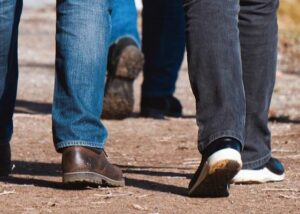How do we reconcile the Hadith prohibiting wearing garments below the ankles and those that seem to permit it?
Quran
Hadith
Islamic Text
We reconcile the Hadith prohibiting wearing garments below the ankles and those that seem to permit it, by doing what classical scholars of Islam done, we say the prohibition is predicated upon arrogance.
عَنْ أَبِي هُرَيْرَةَ، أَنَّ رَسُولَ اللَّهِ صَلَّى اللهُ عَلَيْهِ وَسَلَّمَ قَالَ: لاَ يَنْظُرُ اللَّهُ يَوْمَ القِيَامَةِ إِلَى مَنْ جَرَّ إِزَارَهُ بَطَرًا
Abu Huraira (May Allah Most High be pleased with him) said that Allah’s Messenger ﷺ said, ‘On the Day of Resurrection Allah (Most High) will not look at a person who drags his Izaar (lower garment) out of arrogance.’ (Sahih al-Bukhari, 5788).
Commenting on the above Hadith Imam al-Nawawi made it clear that the narrations need to be considered holistically not in isolation, and when doing so one will conclude that the prohibition of extending the garment beyond the ankles is predicated upon arrogance.
لا يجوز إِسْبَالُهُ تَحْتَ الْكَعْبَيْنِ إِنْ كَانَ لِلْخُيَلَاءِ فَإِنْ كان لغيرها فهو مكروه وَظَوَاهِرُ الْأَحَادِيثِ فِي تَقْيِيدِهَا بِالْجَرِّ خُيَلَاءَ تَدُلُّ عَلَى أَنَّ التَّحْرِيمَ مَخْصُوصٌ بِالْخُيَلَاءِ وَهَكَذَا نَصَّ الشافعي على الفرق كما ذرنا. (شرح صحيح مسلم)
It is not permitted to extend the garments below the ankles if it is done out of arrogance. However, if it is not done in arrogance then it is Makruh (disliked, not Haram). The wording of the Hadith narrations supports restriction (of the prohibition) to (the intention of) arrogance. They (the Hadith narrations) prove that the prohibition is specified to arrogance. As mentioned by (Imam) al-Shafi, differentiating in the way we have mentioned. (Imam al-Nawawi, Sharh Sahih Muslim).
Many later scholars quoted Imam al-Nawawi (amongst them Imam al-Suyuti) when speaking about this issue. This is because they were in agreement with his conclusion and methodology on this issue. He did not consider the narrations indicating absolute prohibition alone, rather he considered them together with those that indicated that arrogance is the underlying cause for the prohibition.
قَوْله لم ينظر الله اليه أَي لَا يرحمه وَلَا ينظر اليه نظر رَحْمَة قَالَ النَّوَوِيّ أعلم ان الإسبال يكون فِي الْإِزَار والقميص والعمامة وَأَنه لَا يجوز اسباله تَحت الْكَعْبَيْنِ ان كَانَ للخيلاء فَإِن كَانَ لغَيْرهَا فَهُوَ مَكْرُوه وظواهر الْأَحَادِيث فِي تقييدها بِالْجَرِّ خُيَلَاء يدل على ان التَّحْرِيم مَخْصُوص بالخيلاء وَهَكَذَا نَص الشَّافِعِي على الْفرق. (شرح سنن ابن ماجه)
Allah (Most High) will not look at him, meaning will not have mercy upon him. So will not look upon him with mercy. Imam al-Nawawi said, know that Isbaal (extending garments) can occur with a loincloth, a long shirt or a turban. Isbaal is not permitted if it goes beyond the ankles and it is done
out of arrogance. However, if it is not done in arrogance then it is Makruh (disliked, not Haram). The wording of the Hadith narrations supports restriction (of the prohibition) to (the intention of) arrogance. They (the Hadith narrations) prove that the prohibition is specified to arrogance. As mentioned by (Imam) al-Shafi, differentiating in the way we have mentioned. (Imam al-Sayuti, Sharh Sunan Ibn Maja).
These Nusoos (texts) from leading scholars of Ahl Sunnah demonstrate how they reconciled between Hadith narrations. It is correct to say that there are certain Hadith narrations that do not stipulate arrogance for the prohibition of garments (e.g. trousers) extending beyond the ankles. However, there are many that do stipulate. Therefore, the scholars reconciled and explained one set of narrations using others. Rather than focusing on some narrations whilst ignoring others, which is not acceptable.
عَنْ أَبِي هُرَيْرَةَ رَضِيَ اللَّهُ عَنْهُ، عَنِ النَّبِيِّ صَلَّى اللهُ عَلَيْهِ وَسَلَّمَ قَالَ: مَا أَسْفَلَ مِنَ الكَعْبَيْنِ مِنَ الإِزَارِ فَفِي النَّارِ
Abu Huraira (May Allah Most High be pleased with him) narrated that Allah’s Messenger ﷺ said, ‘Whichever part of the Izaar (lower garment) is beyond the ankles, is in the Fire.’ (Sahih al-Bukhari, 5787).
This is an authentic Hadith narration and does not stipulate arrogance for the prohibition. However, according to the agreed upon principle, that Quran and Hadith is not to be isolated but rather brought together to achieve a sound understanding, scholars will bring these narrations together and understand them holistically. Imam al-Ayni commented on this Hadith in his Sharh of Sahih al-Bukhari:
وَهَذَا مُطلق يجب حمله على الْمُقَيد وَهُوَ مَا كَانَ للخيلاء. (عمدة القاري شرح صحيح البخاري)
And this (Hadith) is Mutlaq (unconditional), it is necessary to understand it in light of the Muqayyad (conditional) narrations. Therefore, it (the prohibition) relates to that which is done in arrogance. (Imam Badr al-Deen al-Ayni, Umdatu al-Qari Sharh Sahih al-Bukhari).
This comment should come as no surprise to a person who has knowledge of the Holy Quran and Sunnah. Scholars are constantly explaining verses of Quran or Hadith using other verses and Hadith narrations. Rather the problem is the opposite. Thus, scholars condemn people who take Quranic verses or Hadith narrations in isolation, because it leads to a distortion of the religion. In the text below we find Imam Ali al-Qari concluding that the prohibition is predicated upon arrogance, this is in line with many other Hadith commentators. There is no doubt that he came to this conclusion by considering all of the relevant narrations.
كَإِرْسَالِ الثَّوْبِ، فَيَحْرُمُ لِلْخُيَلَاءِ، وَيُكْرَهُ لِغَيْرِهِ. (مرقاة المفاتيح شرح مشكاة المصابيح)
Like extending the garment, it is Haram if done out of arrogance. Otherwise it is Makruh (disliked, not Haram. (Imam Ali al-Qari, Mirqaat al-Mafateeh Sharh Mishkaat al-Masabeeh).
In conclusion, when one considers all of the sound Hadith narrations related to this issue, then it will become evident that the prohibition of extending the trousers (or other garments) beyond the ankles is applicable when it is done out of arrogance. Unfortunately many people fail to do this regarding the issue at hand. Rather they will quote some narrations and then insist it is Haram irrespective of arrogance. Such people will ignore multiple sound Hadith narrations. This approach is unacceptable. The scholars of Islam have insisted throughout history upon considering all sound narrations when speaking about the Deen of Allah Most High.
Finally, it is important to remind people that wearing garments to mid-shin is the Sunnah. So, although it is not prohibited to extend trousers etc beyond the ankles, it certainly is superior for men to restrict garments to the Sunnah length.
And Allah Most High Knows Best.
– Answered by Shaykh Noorud-deen Rashid (20.01.2022)
See also:
Is it Sunnah to wear trousers to the middle of the shin?
Is it Haram to allow trousers to extend beyond the ankles?
Hadith in which the Prophet allowed his garment to drag below the ankles
Hadith of Abu Bakr dragging the lower garment
See also (video):






